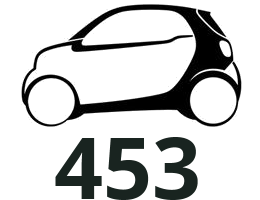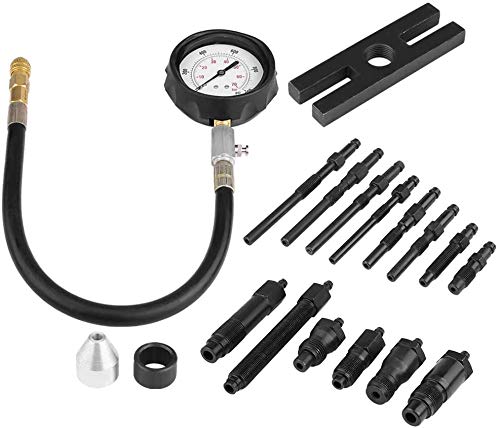Mod Description
A handy little test that you can perform at home to gauge the health of your pistons and bores.Mod Details
PremiumYes Difficulty



 Mod ID429
CreditEvilution
Cost£ï¿½15+
For
Mod ID429
CreditEvilution
Cost£ï¿½15+
For



 Linkhttps://www.evilution.co.uk/mod/performing-a-compression-test.htm Copy to Clipboard
Linkhttps://www.evilution.co.uk/mod/performing-a-compression-test.htm Copy to ClipboardWhy Do A Compression Test?
The simple test can indicate if you are having problems with oil seals, damaged bores, incorrectly seated valves, worn rings or a leaking head gasket.
What Do I Need?
Petrol – You will need a suitable compression tester. This is what most petrol engine compression testers look like and often come in a case with different connections.

Examples can be seen here, here, here, here etc. However, a compression tester meant for a petrol engine cannot be used on a diesel engine.
Diesel – the diesel engines run at a much higher compression rate. Far outside the gauge range of a standard petrol engine version. Also, since the diesel engines have glow plugs instead of spark plugs, the threaded connectors are much more narrow.

Examples can be seen here and here although I can’t guarantee fitment. The adapter looks like the glow plug it replaces. You’ll need one of the same thread type (M10x1.0mm) and as close to the same length without going any longer than the original glow plug. You really don’t want the piston hitting the compression tester adapter.
Petrol – How To Perform A Compression Test
1 – Remove the top 3 spark plugs. This allows the gauge to screw into on of the holes so neither of the other 2 cylinders create compression which could change the readings.
2 – Remove the HT leads from the lower spark plugs but leave the spark plug in place. The upper spark plugs should already be unplugged before you removed them.
3 – Unplug the connectors to the 3 injectors at the top front section of the engine. An easier option to this is to either pull the fuse out for the fuel pump or disconnect the fuel line from the fuel rail or the fuel filter. If you disconnect the fuel pipe, make sure you stick it in a bottle to collect the fuel that will be pumped out as you perform the compression test. Disconnecting the crankshaft rotation sensor instead will also stop the injectors and spark plugs from firing.
4 – Screw the gauge into the spark plug hole of the first cylinder.
5 – Start the car. The smart has an auto start that turns the car over for about 4 seconds, if the engine doesn’t start, it automatically stops.
6 – Read the pressure reading from the gauge and write it down.
7 – Unscrew the gauge and perform the above steps with the other 2 cylinders.
Diesel – How To Perform A Compression Test
1 – Disconnect and remove the glow plugs. This allows the gauge to screw into on of the holes so neither of the other 2 cylinders create compression which could change the readings.
2 – Unplug the connectors to the 3 injectors at the top rear section of the engine and pull the fuse out for the fuel pump or disconnect the fuel line from the fuel rail or the fuel filter. If you disconnect the fuel pipe, make sure you stick it in a bottle to collect the fuel that will be pumped out as you perform the compression test. Alternatively, disconnecting the crankshaft rotation sensor will also stop the injectors from firing, however it’s very hard to get to.
3 – Screw the gauge into the glow plug hole of the first cylinder.
4 – Start the car. The smart has an auto start that turns the car over for about 4 seconds, if the engine doesn’t start, it automatically stops.
5 – Read the pressure reading from the gauge and write it down.
6 – Unscrew the gauge and perform the above steps with the other 2 cylinders.


